

others
Gold recovers on weak final Q3 GDP data, US core PCE eyed – Crypto News
- Gold price picks strength after downbeat final Q3 GDP data, US PCE data still awaited
- A sticky US core PCE report may dampen investors’ short-term appeal for Gold.
- Fed Harker said that rate cuts won’t come sooner that what the market is expecting.
Gold price (XAU/USD) attempts to resume upside journey after the United States Bureau of Economic Analysis (BEA) reported in its final estimate report that the economy grew by 4.9% against estimates and the former reading of 5.2%. This has brought a sharp sell-off in the US Dollar, which has already been on the back foot due to soaring expectations of rate cuts by the Fed. Few investors still believe that the US central bank is not going to lower rates sooner amid the resilience of the US economy.
Philadelphia Fed Bank President Patrick Harker also pushed back expectations of upcoming cuts in borrowing costs. Harker said he sees a soft landing, but warned that unemployment could rise moderately.
Further action in the Gold price will be driven by the US core Personal Consumption Expenditure Price Index (PCE) for November, due on Friday. A report signalling that inflation remains sticky could slow down a broader rally in the Gold price as it would likely force Federal Reserve (Fed) policymakers to opt for a more restrictive monetary policy stance.
Daily Digest Market Movers: Gold price recovers while US Dollar fell vertically after Q3 GDP data
- Gold price finds strength as final reading of Q3 Gross Domestic Product (GDP) has landed at 4.9%, lower than expectations and the former print of 5.2%.
- Initial Jobless Claims (IJC) for the week ending December 15 were 205K, little higher than the prior reading of 203K but remain lower than expectations of 215K.
- Meanwhile, investors await the United States core PCE Price Index data for November, which is scheduled for Friday.
- Fed’s preferred inflation measure is likely to provide clues over how long the central bank is required to keep interest rates in a restrictive trajectory.
- Themonthly core PCE price index is expected to increase at a steady pace of 0.2%. On an annual basis, PCE inflation is expected to decelerate to 3.3% from 3.5%.
- A sticky underlying inflation report may trim expectations of early rate cuts by the Federal Reserve and compel policymakers to keep interest rates in the restrictive trajectory for longer until the return of inflation to 2% is confirmed.
- This could also improve appeal for the US Dollar and benefit irisk-sensitive assets.
- In the Summary of Economic Projections (SEP) released last week, all Fed policymakers favoured no further rate hikes and the majority of members supported a decline in borrowing costs by 75 basis points (bps) in 2024.
- Atlanta Fed Bank President Raphael Bostic, New York Fed Bank President John Williams, and Philadelphia Fed Bank President Patrick Harker showed their openness to lowering interest rates, but said that an immediate cut isn’t expected.
- Harker said that one major reason to cut interest rates next year is that businesses are struggling to augment higher interest obligations.
- While asked about the possibility of a soft landing, Harker said that it is quite possible, but warned that the Unemployment Rate could rise moderately. A ‘soft landing’ is a scenario in which inflation returns to 2% without triggering a recession
- In addition to the US core PCE price index data, investors will also focus on the Durable Goods Orders data for November, also due Friday.
- Fresh orders for Durable Goods are expected to increase by 2.2% against a decline of 5.4% a month earlier. A higher-than-anticipated increase in new orders would provide some cushion to the US Dollar.
- Deepening hopes of early cuts in borrowing costs by the Fed have weighed down US Treasury yields further. The 10-year US Treasury yields have dropped to near 3.87%.
Technical Analysis: Gold price aims a break above $2,040
Gold price continues to trade sideways below $2,040.00. The precious metal trades inside Tuesday’s range amid the absence of a potential trigger. The broader appeal for Gold is quite bullish as short-to-long-term daily Exponential Moving Averages (EMAs) are sloping higher.
Gold FAQs
Gold has played a key role in human’s history as it has been widely used as a store of value and medium of exchange. Currently, apart from its shine and usage for jewelry, the precious metal is widely seen as a safe-haven asset, meaning that it is considered a good investment during turbulent times. Gold is also widely seen as a hedge against inflation and against depreciating currencies as it doesn’t rely on any specific issuer or government.
Central banks are the biggest Gold holders. In their aim to support their currencies in turbulent times, central banks tend to diversify their reserves and buy Gold to improve the perceived strength of the economy and the currency. High Gold reserves can be a source of trust for a country’s solvency. Central banks added 1,136 tonnes of Gold worth around $70 billion to their reserves in 2022, according to data from the World Gold Council. This is the highest yearly purchase since records began. Central banks from emerging economies such as China, India and Turkey are quickly increasing their Gold reserves.
Gold has an inverse correlation with the US Dollar and US Treasuries, which are both major reserve and safe-haven assets. When the Dollar depreciates, Gold tends to rise, enabling investors and central banks to diversify their assets in turbulent times. Gold is also inversely correlated with risk assets. A rally in the stock market tends to weaken Gold price, while sell-offs in riskier markets tend to favor the precious metal.
The price can move due to a wide range of factors. Geopolitical instability or fears of a deep recession can quickly make Gold price escalate due to its safe-haven status. As a yield-less asset, Gold tends to rise with lower interest rates, while higher cost of money usually weighs down on the yellow metal. Still, most moves depend on how the US Dollar (USD) behaves as the asset is priced in dollars (XAU/USD). A strong Dollar tends to keep the price of Gold controlled, whereas a weaker Dollar is likely to push Gold prices up.
-

 Blockchain1 week ago
Blockchain1 week agoAfrica Countries Pass Crypto Laws to Attract Industry – Crypto News
-
Cryptocurrency1 week ago
XRP News: Ripple Unveils ‘Ripple Prime’ After Closing $1.25B Hidden Road Deal – Crypto News
-
others1 week ago
JPY soft and underperforming G10 in quiet trade – Scotiabank – Crypto News
-
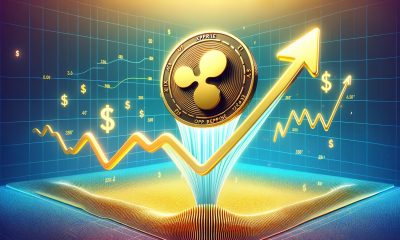
 Blockchain1 week ago
Blockchain1 week agoXRP Price Gains Traction — Buyers Pile In Ahead Of Key Technical Breakout – Crypto News
-

 Blockchain1 week ago
Blockchain1 week agoISM Data Hints Bitcoin Cycle Could Last Longer Than Usual – Crypto News
-
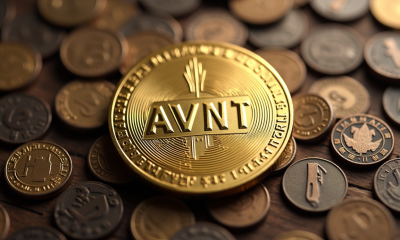
 Cryptocurrency1 week ago
Cryptocurrency1 week agoWhat next for Avantis price after the 73% recovery? – Crypto News
-

 Technology1 week ago
Technology1 week agoNothing OS 4.0 Beta introduces pre-installed apps to Phone (3a) series: Co-founder Akis Evangelidis explains the update – Crypto News
-

 Technology5 days ago
Technology5 days agoSam Altman says OpenAI is developing a ‘legitimate AI researcher’ by 2028 that can discover new science on its own – Crypto News
-

 Cryptocurrency1 week ago
Cryptocurrency1 week agoTrump plans to pick Michael Selig to lead CFTC: Report – Crypto News
-

 Blockchain1 week ago
Blockchain1 week agoEthereum Rebounds From Bull Market Support: Can It Conquer The ‘Golden Pocket’ Next? – Crypto News
-

 De-fi1 week ago
De-fi1 week agoNearly Half of US Retail Crypto Holders Haven’t Earned Yield: MoreMarkets – Crypto News
-

 Cryptocurrency1 week ago
Cryptocurrency1 week agoBitcoin’s institutional surge widens trillion-dollar gap with altcoins – Crypto News
-

 Technology1 week ago
Technology1 week agoUniswap Foundation (UNI) awards Brevis $9M grant to accelerate V4 adoption – Crypto News
-
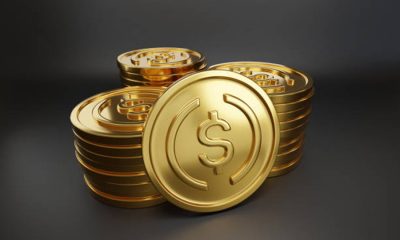
 Blockchain1 week ago
Blockchain1 week agoBinance Stablecoin Outflow On A Steady Rise — What This Means For The Market – Crypto News
-
others1 week ago
Indian Court Declares XRP as Property in WazirX Hack Case – Crypto News
-

 Cryptocurrency1 week ago
Cryptocurrency1 week agoWestern Union eyes stablecoin rails in pursuit of a ‘super app’ vision – Crypto News
-

 Technology1 week ago
Technology1 week agoFrom Studio smoke to golden hour: How to create stunning AI portraits with Google Gemini – 16 viral prompts – Crypto News
-
Business1 week ago
PEPE Coin Price Prediction as Weekly Outflows Hit $17M – Is Rebound Ahead? – Crypto News
-

 Cryptocurrency1 week ago
Cryptocurrency1 week agoHYPE Breaks Out After Robinhood Listing and S-1 Filing: What’s Next? – Crypto News
-

 De-fi1 week ago
De-fi1 week agoHYPE Jumps 10% as Robinhood Announces Spot Listing – Crypto News
-
others1 week ago
Platinum price recovers from setback – Commerzbank – Crypto News
-
Business1 week ago
White House Crypto Czar Backs Michael Selig as ‘Excellent Choice’ To Lead CFTC – Crypto News
-
others1 week ago
Bitcoin Price Eyes $120K Ahead of FED’s 98.3% Likelihood to Cut Rates – Crypto News
-

 Technology1 week ago
Technology1 week agoMint Explainer | India’s draft AI rules and how they could affect creators, social media platforms – Crypto News
-
others1 week ago
GBP/USD holds steady after UK data, US inflation fuels rate cut bets – Crypto News
-

 Blockchain1 week ago
Blockchain1 week agoEntire Startup Lifecycle to Move Onchain – Crypto News
-

 Blockchain1 week ago
Blockchain1 week agoXRP/BTC Retests 6-Year Breakout Trendline, Analyst Calls For Decoupling – Crypto News
-

 Cryptocurrency1 week ago
Cryptocurrency1 week agoUSDJPY Forecast: The Dollar’s Winning Streak Why New Highs Could Be At Hand – Crypto News
-
others1 week ago
Is Changpeng “CZ” Zhao Returning To Binance? Probably Not – Crypto News
-

 Cryptocurrency1 week ago
Cryptocurrency1 week agoFetch.ai and Ocean Protocol move toward resolving $120M FET dispute – Crypto News
-
Technology1 week ago
Can Hype Price Hit $50 After Robinhood Listing? – Crypto News
-

 Technology1 week ago
Technology1 week agoOpenAI announces major Sora update: Editing, trending cameos, and Android launch on the way – Crypto News
-

 Metaverse1 week ago
Metaverse1 week agoGemini in Gmail automates meeting schedules effortlessly – Crypto News
-

 Cryptocurrency1 week ago
Cryptocurrency1 week agoNEAR’s inflation reduction vote fails pass threshold, but it may still be implemented – Crypto News
-

 Technology1 week ago
Technology1 week agoSurvival instinct? New study says some leading AI models won’t let themselves be shut down – Crypto News
-
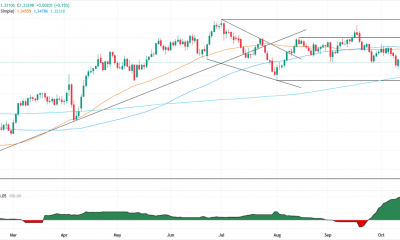
 others7 days ago
others7 days agoGBP/USD floats around 1.3320 as softer US CPI reinforces Fed cut bets – Crypto News
-

 Cryptocurrency6 days ago
Cryptocurrency6 days agoCitigroup and Coinbase partner to expand digital-asset payment capabilities – Crypto News
-

 Cryptocurrency5 days ago
Cryptocurrency5 days agoInside Bitwise’s milestone solana ETF launch – Crypto News
-
others1 week ago
Silver consolidates below $49 amid Fed rate-cut bets – Crypto News
-
Business1 week ago
HBAR Price Targets 50% Jump as Hedera Unleashes Massive Staking Move – Crypto News
-
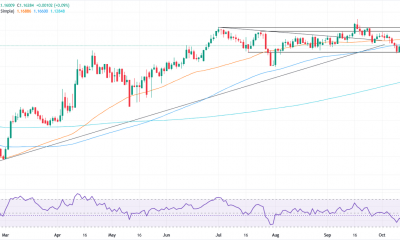
 others1 week ago
others1 week agoEUR/USD hovers at 1.1600 as muted CPI data fails to alter Fed stance – Crypto News
-
Business1 week ago
Trump Picks SEC Crypto Counsel Michael Selig to Lead CFTC Amid Crypto Oversight Push – Crypto News
-

 Blockchain1 week ago
Blockchain1 week agoPump.Fun Rallies 10% After Acquisition Of Trading Terminal Padre – Crypto News
-
Technology1 week ago
Analyst Eyes Key Support Retest Before a Rebound for Ethereum Price Amid $93M ETF Outflows and BlackRock Dump – Crypto News
-
Business1 week ago
Ripple Explores New XRP Use Cases as Brad Garlinghouse Reaffirms Token’s ‘Central’ Role – Crypto News
-
others1 week ago
Tether’s Stablecoin 1.0 Era Is Over – Now the Industry Needs 2.0 – Crypto News
-

 De-fi1 week ago
De-fi1 week agoAave Labs Acquires Stable Finance to Expand DeFi Access – Crypto News
-

 Blockchain1 week ago
Blockchain1 week agoKyrgyzstan Launches Stablecoin While Confirming Future CBDC – Crypto News
-
others1 week ago
USD/JPY extends gains as strong US PMI offsets softer CPI data – Crypto News
-
Technology1 week ago
James Wynn Takes XRP Long Bet After Ripple Prime Announcement – Crypto News










